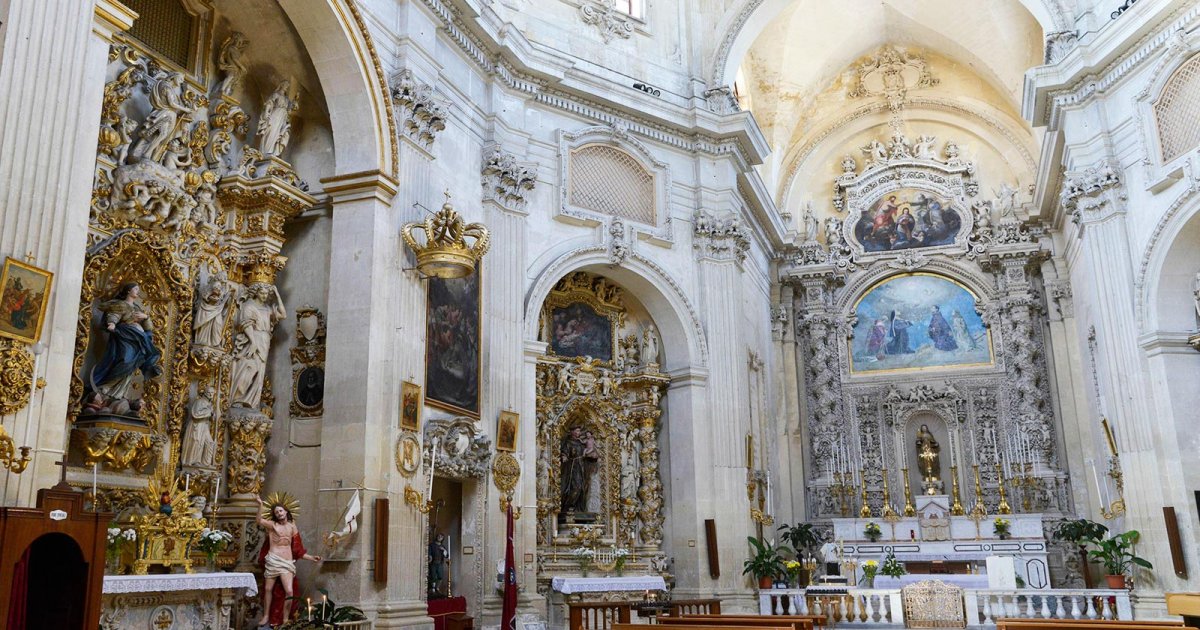CHURCH OF SANTA CHIARA, Church Of Santa Chiara
 Language: English / USA
Language: English / USA
Hi, my name’s Jill, and I’m your personal guide. Along with MyWoWo, I’d like to welcome you to one of the Wonders of the World: the Church of Santa Chiara.
The Church of Santa Chiara, built over an existing church dating to the 15th century, is another delightful example of Lecce Baroque.
It was rebuilt between 1687 and 1691 by the Lecce architect, Giuseppe Cino, who designed many of the most interesting edifices in the city, including the Seminary in Piazza del Duomo.
On this occasion, however, Cino added a significantly innovative feature: if you look at the facade, you’ll realize that it is not flat, like almost all the churches in Lecce, but slightly convex. This architectural technique was experimented with in Rome by the biggest names in Baroque architecture, such as Bernini and Borromini. In Lecce, it had already appeared on the Church of San Matteo, the masterpiece by the architect Larducci, who probably shared several ideas with Cino on how to build the new church.
The elegant facade is divided into two parts, and is richly decorated around the main door, the windows and the niches. The top part comes to an abrupt halt, but only because it remained uncompleted.
Now press pause and enter the church.
The interior, also attributed to Cino, is similar in structure to San Matteo: a single chamber with an octagonal floor plan. Alternating along the walls, between arches of varying size, are the various chapels, in local Baroque style, some of them designed by Cino himself. Above the arches of the chapels, you can spot the gratings through which the nuns were able to listen to Mass without being seen, entering directly from the convent behind the church, which is today home to the new MUST, the Historical Museum of the City of Lecce, which I recommend you visit.
In the presbytery, you can see a monumental main altar, boasting a wealth of fine architectural elements and embellished with two magnificent twisted columns. In the central niche is a statue of Saint Clare of Assisi, to whom the church is dedicated.
Let me leave you with an interesting fact: the drop ceiling of the church, created in 1738, was made entirely of papier mâché to mimic the much more expensive wood.



